You can get into welding by getting on-the-job training, a vocational certificate, or an associate’s degree in welding. You can also obtain a certification for the type of welding that you want to pursue.
Most employers in the welding industry prefer welders who already have the necessary training, certifications, and credentials as welding jobs involve complex welding equipment and high-temperature flames.
Table of Contents
What Does a Welder do?
-
Apply for a welding degree at NEIT!
Loading…
/**/
Welders are professionals trained in the area of joining metal parts and components through heat and fusion. Be it building metal products, fabricating off-shore structures, or general repair and maintenance, professionally-trained welders are in great demand in many core technical sectors.
Construction, manufacturing, automobiles, ships, and aircraft are some common areas where welders work.
The job responsibilities of a welder can include:
- Fabricating metal joints that are safe and durable.
- Preparing the materials and equipment for welding.
- Following safety guidelines to ensure safe usage of flames and equipment.
- Reading blueprints and drawings for creating standard welds.
- Ensuring that welding equipment is properly cleaned and stored.
- Maintaining the right flame temperature for and metals welding process.
A welder can also work as a welding inspector and help ensure that welding practices adhere to the prescribed quality and safety standards and checks for welding defects that can hamper the joint’s strength and quality.
Becoming a welder also requires you to possess a strong technical background and a thorough understanding of welding practices.
How to Become a Welder?
If you love working on the practical aspects of things, welding can be a good career option for you. Along with the passion for building things, you require plenty of training and practice to become a successful welder. You must also know the industry trends, types of welding processes, and potential employers for building a successful career in welding.
If you wish to become a welder, these are the simple steps you can follow:
Research the different types of welding jobs
Welding is a diverse field as you can almost join all kinds of metals such as mild steel, stainless steel, aluminum, etc. Depending on the metal that you have to join and the application’s criticality, the type of welding differs significantly. Some common forms of welding are:
- Gas metal arc welding (GMAW) or metal inert gas (MIG) welding: commonly used to fabricate metal joints for general applications. MIG welding finds its application in ship-building, automobiles, bridges, and steel components.
- Shielded-metal arc welding(SMAW): also known as stick welding, SMAW is a very popular, inexpensive, and simple-to-operate type of welding. In construction jobs, home projects, and repair activities, welders use SMAW for quickly welding small components.
- Flux-coated arc welding (FCAW): uses a consumable flux-cored electrode continuously fed through the welding gun, making it ideal for mass production lines.
- Gas tungsten arc welding or TIG welding: a specialized type of welding that welders use to join aluminum, magnesium, copper, and brass alloys. Tungsten inert gas welding creates high-quality weld and hence requires highly skilled welders.
The skills, training, and certifications required for different types of welding can vary. You must learn the skills associated with welding techniques that align with your capabilities and strengths. Getting trained and certified in specific welding techniques such as MIG welding can help you achieve high-paying welding jobs.
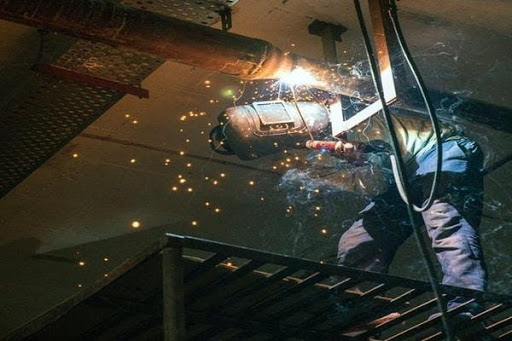
Enroll For an Associate Degree In Welding Engineering Technology At New England Tech today!
START YOUR WELDING CAREER
Earn your degree in Welding Engineering Technology from NEIT and begin your new career path today!
ASSOCIATE'S DEGREE
BACHELOR'S DEGREE
Take welding courses
A training program is one of the best ways to kickstart your welding career, particularly if you don’t have any prior experience in welding. You can become a welder by undertaking a welding certification program or pursuing an associate’s degree in welding engineering technology.
Typical welding certification programs can last from six to eighteen months. For an excellent welding career, you must keep updating your knowledge with relevant, up-to-date skills.
A high-school diploma or a GED is generally the minimum requirement for taking up a welder training program. The primary schooling for welding can help equip you with math, science, and shopfloor skills that can come in handy during your welder training program.
After you finish your GED, you can apply to a vocational school or a community college for a welding certificate program.
Getting Your Associate’s Degree In Welding Technology
An associate degree in welding engineering technology is a great way to enhance your career prospects. You will learn higher-level welding skills and gain more practical exposure as compared to a certificate program. During your degree program, you will get hands-on experience that can help kickstart a great career.
In addition to welding and pipefitting, students also learn:
- industrial OSHA safety procedures and policy
- metallurgy
- structural design
- blueprint reading
- computer-aided design & drafting (CADD)
- nondestructive testing
- precision measurement.
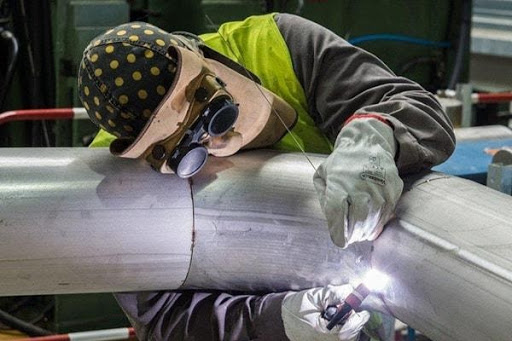
Gain Hands-on Experience
A welding apprenticeship program offers you the chance to learn different types of welding and also lets you earn while you learn. Apprenticeship training can be a part of your welding program at the community college or welding school that you enroll. You can apply for a welding job directly in a company that offers you on-the-job training.
During your apprenticeship, you can work entry-level welding jobs and learn the skills that can help you apply for welding certifications. The more time you complete during your apprenticeship, the better it is for your career as companies prefer welders with more practical training.
Directly applying to an apprenticeship can take up to three years to rise to a journeyman’s rank.
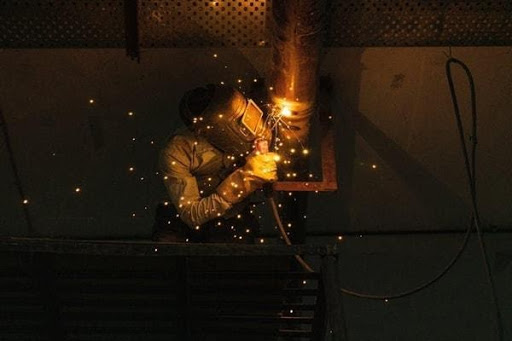
Become a Certified Welder
Welders must prepare for the American Welding Society (AWS) certification program to validate their welding skills and offer excellent credibility while applying for jobs. You can pursue some of these popular welder certificate programs:
- Certified Welder (CW)
- Certified Welding Inspector (CWI)
- Senior Certified Welding Inspector (SCWI)
- Certified Welding Educator (CWE)
- Certified Welding Sales Representative (CWSR)
- Certified Associate Welding Inspector (CAWI)
- Certified Radiographic Interpreter (CRI)
- Certified Robotic Arc Welding (CRAW)
- Certified Welding Supervisor (CWS)
- Certified Welding Engineer (CWE)
You can sit for the Certified Welder certification exam immediately after completing your welding training. However, if you wish to become a certified welding inspector or a senior welding inspector, you also need education, a qualifying work experience of several years, and a vision test.
For becoming an educator, you might also need a written recommendation specifying your current role.
You can obtain these certifications by giving a welding test and a written exam every six months or one year to keep your certificates up-to-date.
Commercial welders often require the AWS GMAW or MIG 3G certification, a basic skills test for professional welders. More certifications may be necessary, depending on the specific welding skills required for a particular job.
These certifications allow you to assume the title of a “Certified Welder,” which can open up various job opportunities. Students at NEIT get to prepare for future certifications through simulated welder qualification tests.
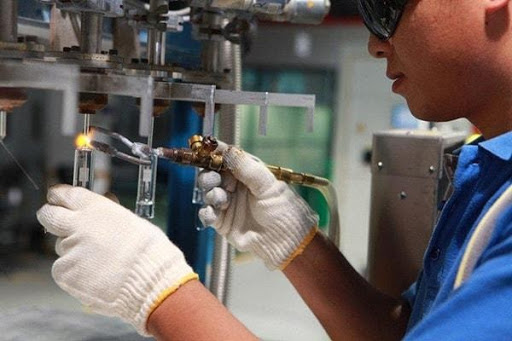
Begin Your Job Search
Before you begin your job search, you must look up roles that closely match your skillset and strength. Some welding jobs may require you to work in hazardous locations and require exceptional hand-eye coordination. The salary you receive will also differ as per the job description.
These are the roles that you can step into after completing your welding training:
Welder
Most welding certificate programs offered at community colleges can equip you with the basic training and skills required for welding. Welders can work in manufacturing, construction, heavy machinery, automobiles, ships, and aircraft industry. However, such jobs will restrict you to entry-level jobs such as a wire feed welder or tack welding operator.
Welding Supervisor/Engineer
The skills you learn in an associate degree program expose you to higher-level skills. Once you complete your associate degree, you can pursue a supervisor or welding engineer’s role. Such roles often have higher responsibilities such as project management and planning, microstructure analysis, and overseeing the daily production.
Welding Instructor
To become a welding instructor, you must pass the Certified Welding Instructor (CWI) certification examination from the American Welding Society. If you have a passion for teaching aspiring welders in the different welding programs offered at welding schools, you can find several job roles. As an instructor, you also need experience with different styles of welding.
Welding Inspectors
Such job roles are well-suited for the welders interested in taking up quality control roles. Welding inspectors also perform various tests such as radiography to test the weld quality. They also ensure that welders adhere to safety standards such as wearing a welding helmet or using eye protection.
Average Salary of A Welder
The Bureau of Labor Statistics (BLS) states that the annual median salary for welders in 2019 was $42,490. The salary of the top 10 percent welding professionals was $64,240 per year.
The salary you receive a welder will also vary depending upon the job role, location, and experience levels. The Top 10% of welders working in specialized sectors such as underwater welding can earn upwards of $80,000 per year.
Indeed.com statistics suggest that the average salary for welders in 2021 in the USA is $17.91 per hour. Since welders work in difficult working conditions, employers also provide dental, vision, and health insurance to a welder.
Some of the top employers offered an average salary at a rate upwards of $35 per hour. Many welders working overtime in 12-hour shifts have the opportunity to earn extra.
Becoming a welder means that you will be working in critical sectors that help in the smooth functioning of our daily lives. Seeing your work empower people’s lives also gives you reasonable job satisfaction.
The prospects also seem bright for welders as BLS estimates show that welding jobs would grow by approximately 3% in the next ten years.
How Long Does it Take to Become a Welder?
The time you need to become a welder can vary according to the type of training program you enroll. If you already have a high-school diploma, you can directly apply for a certificate program or an associate degree at any of the best welding training schools in the USA. Welding training can take anywhere from a few months to a few years.
A high-school diploma or GED can take three months to 4 years and builds your foundational knowledge required for welding. A welder training program can take anywhere between six months to two years to complete.
Training programs include welding and cutting practices, the metallurgy of welding, safety and quality standards in welding.
You can also start your welding career as a welding laborer in companies that provide on-the-job training. This will allow you to pursue welding roles in the company while working in full-time positions. You might still require a high-school diploma if you want to work as an apprentice.
A formal, full-time welding training program can significantly improve your career prospects. Training schools such as NEIT also offer extensive hands-on training that further helps improve your employability.
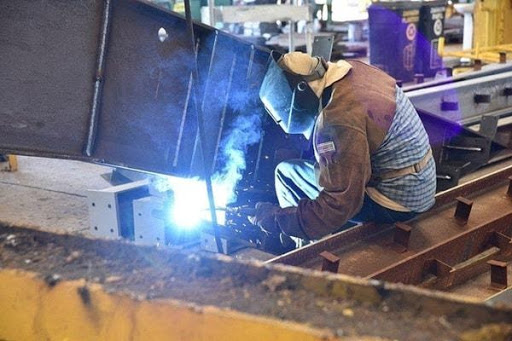
Welding certifications consist of tests and inspections that take a certain number of hours. If you do not have adequate experience or job training in welding, you might find it difficult to clear the certification exam. Meeting the eligibility requirements for specialized welding certifications is the most time-consuming process.
Applying for filling up the form and receiving certification in a particular area can take time. However, you can immediately kickstart your career as a welder as soon as you finish the welding program you’ve enrolled in.
Welding is a challenging yet rewarding career that offers great career prospects. With the right training and experience that you gain in a formal training career, you can quickly transition to full-time roles in the industry.
Ready to kickstart your career as a welder? Request for more information today!
START YOUR WELDING CAREER
Earn your degree in Welding Engineering Technology from NEIT and begin your new career path today!
ASSOCIATE'S DEGREE
BACHELOR'S DEGREE
FAQs
How Long Does It Take to Get a Welding Certification?
A welding certification test or inspection can take several hours. While you can apply for some certifications directly, you must meet the eligibility criteria for education and experience when applying for specialized certifications.
The entire method of getting a welding certification also varies, considering the time required for applying, processing, and receiving your certificate.
How Long Does It Take to Get Your Welding License?
The time required for getting your welding license differs according to the state laws. The criteria for obtaining a license may include work experience and pre-approval from the state to sit for the exam. Welding license exams generally consist of 60 equations that you need to solve in two hours with an accuracy of a minimum of 70 percent.

